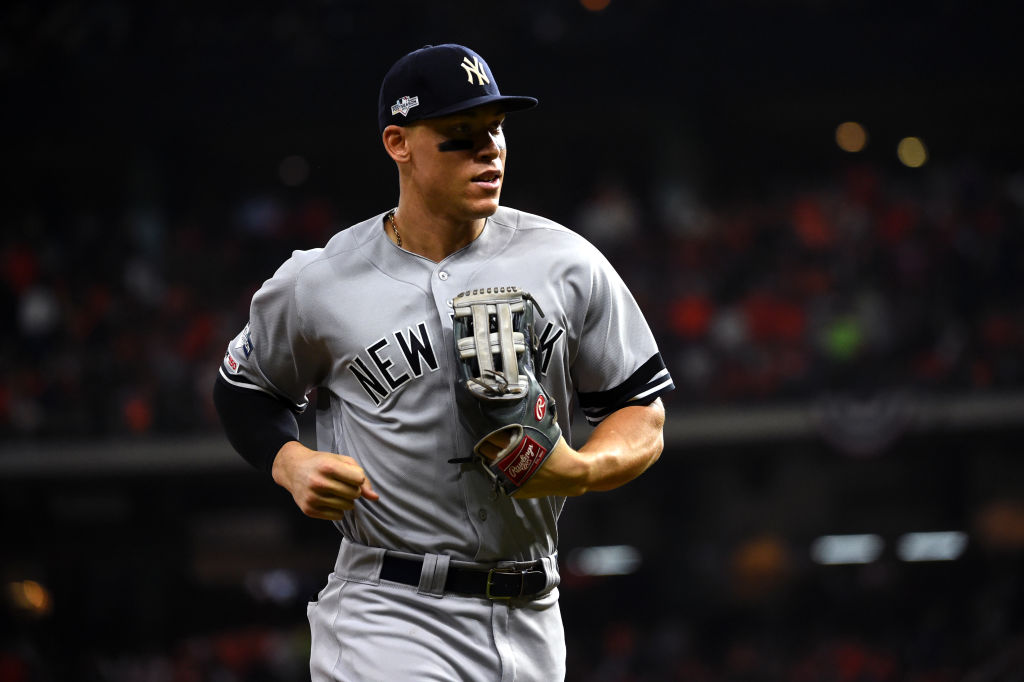MLB
Why There’s No Reason to Freak Out Over Nike Swooshes on Baseball Jerseys

While sports uniforms can seem simple, they’re a bit more complicated in practice. In one sense, they’re just a commercially produced piece of clothing, worn by players during the action and fans supporting their team. In another, they’re an obvious outward representation of the club. That dichotomy is coming to a head in Major League Baseball, where Nike swooshes will start appearing on jerseys this season.
Unsurprisingly, many baseball fans aren’t happy with the deal. But do they have a legitimate gripe, or are they trying to fight city hall?
The history of baseball uniforms
While baseball is a game grounded in tradition, uniforms have changed quite a bit over the years. Some of the earliest teams took the field in oddly formal attire.
In 1849, the New York Knickerbockers became the first team to wear uniforms; every time they hit the diamond, they donned blue wool pants, white flannel shirts, and straw hats. Most Teams wore full-length pants—each squad had a different color, which helped them differentiate between teammates and opponents—but some, like the Cincinnati Red Stockings, wore shorter knickers with distinctive socks.
Over time, however, uniforms started to evolve. Teams slowly began wearing pinstripes and other patterns. Soon after, “shield front” jerseys were replaced with more conventional logos; collars began to shrink before disappearing for good. Playing accessories also evolved, with conventional baseball caps and cleats replacing straw hats and soft leather shoes.
Despite those changes, baseball uniforms have generally remained consistent since roughly 1910. While there have been some notable attempts to shake things up—like the Chicago White Sox’s infamous shorts or additions of kelly green and burgundy to the color pallet—the simple cap, jersey, and pants have become part of baseball’s timeless charm.
The Nike Swoosh comes to baseball uniforms
Since 2004, Major League Baseball uniforms have been made by Majestic. When teams first take the field in spring, however, they’ll be wearing Nike-branded attire.
While Majestic only stitched a small logo onto the sleeve of each jersey, Nike will not be taking a similar approach. Instead, the company’s iconic Swoosh will sit on every team’s chest. No organization, not even traditional clubs like the New York Yankees or Los Angeles Dodgers, will be exempt from the branding.
Given the sport’s affinity for unwritten rules and tradition, many baseball fans had a visceral reaction to the Nike Swoosh. Angry posts flooded social media; the logo was decried as awful, tacky, and ruining the sport.
An additional logo isn’t the end of the world
Sports are an incredibly personal thing for all fans. Relationships with teams can go back generations and tie disparate groups together; someone may love the Yankees, for example, because their father, grandfather, and great-grandfather were all fans of the club. While that makes the reaction over a simple Nike Swoosh understandable, it’s still a bit overblown.
At the end of the day, a jersey is already a piece of branded apparel. Every time you put one on, you’re becoming a walking billboard for the team; whether you’re donning a Cardinals jersey or a Toronto Blue Jays hat, you’re promoting the club and major league baseball. Having a small Nike Swoosh on your chest won’t materially change anything other.
When it comes to tradition, it’s easy to miss the forest through the trees. Your fandom, however, is all a matter of perspective; in theory, you love the team for what it represents, not the shirt it wears. That identity won’t change because of a branded logo.











